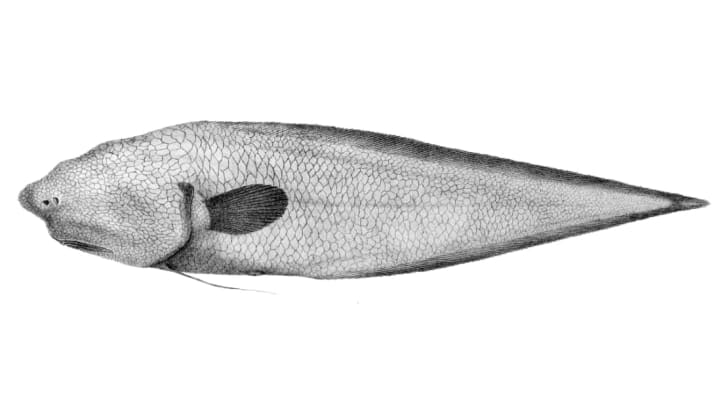Deep-sea scientists see some pretty weird things, but nothing comes close to the spooky, blank-headed fish recently hauled up from the abyss. Researchers say the faceless cusk-eel—a kind of bony fish—lives so far into the black depths that luxuries like eyes are superfluous.
The Australian research vessel Investigator has been plumbing the abyss for a month, scooping up all manner of strange beasts, many of which have never been seen before. The mission is pulling out all the stops in its sampling, using sleds, grabbers, cameras, and the largest fishing net ever deployed in the deep sea.
“Abyssal animals have been around for at least 40 million years but until recently only a handful of samples has been collected from Australia’s abyss,” chief scientist Tim O’Hara said in a blog post for the Commonwealth Scientific and Industrial Research Organization (CSIRO). It’s “a world of jelly and fangs, with miniature monsters gliding up and down waiting for prey.”
The 40-member research team aboard Investigator had, therefore, peered into more than their share of weird faces. But a fish with no face was new to them.
Faceless fish and other 'weird' creatures, many new species, hauled up by scientists from deep waters off Australia https://t.co/quSfm4qC8P
— AFP News Agency (@AFP) May 31, 2017
So very weird! #nicenostrils #FishesofOZ #RVInvestigator #abysslife @museumsvictoria @NESPmarinehub #facelessfish @AllLittleFishes pic.twitter.com/2hRs3mpdFG
— Fishes of Australia (@FishesAustralia) May 29, 2017
“Everyone was amazed,” one scientist wrote on the Blogging the Abyss website. “We fishos thought we’d hit the jackpot.”
The team flew into research mode, rifling through old research in search of more information. Eel expert John Pogonoski of CSIRO was the first to discover the disappointing, but still fascinating truth: The faceless fish isn’t new at all, but an important part of history.
The first specimens of the faceless cusk-eel (now identified as Typhlonus nasus) were hauled up in 1874 by naturalists aboard the HMS Challenger, the first-ever global deep-sea mission. The Challenger mission was extraordinary in its success, especially given the primitive nature of its instruments, which included miles and miles of piano wire.
“So, it’s not a new species,” admitted the blogging scientist, “but it’s still an incredibly exciting find. It does have eyes—which are apparently visible well beneath the skin in smaller specimens. I doubt they’d be of much use though.”
